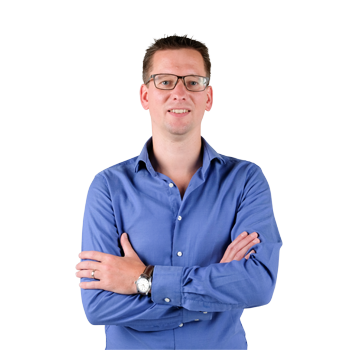The energy transition is in full swing. As a result, TenneT, the grid operator that supplies power to more than 41 million end-users, has more work ever. Take the newly-built wind and solar parks that have to be connected to the electricity network alone. So efficient planning is an absolute must. SST Software and data science specialists CQM jointly developed the solution: a work package planner that makes solving the planning puzzle faster and smarter
Energy transition developments
“The reality is that we have 300 percent work, of which we can only carry out 100 percent” says Pascal de Groot, a member of Tennet’s Integrated Planning team. “Actually, 80 percent; as we’re not only working on new projects, but also have to put aside time to repair faults in the existing high-voltage grid. So it’s not just a question of planning all the work, but also setting priorities and making choices. Organising all those activities is a complex affair.”
In other words, TenneT faces some major planning challenges. Especially when you consider that this public company has the lead role in executing all these operations, which amount to no fewer than 300 ongoing projects involving some 2500 people. “It used to be easier to oversee our work,” says De Groot, “but now it’s exploded, plus we’re dealing with more stakeholders. So planning in the normal way is no longer possible.”
The normal way being manually entering data into software packages. “We saw we were running into limitations. As a graduate in Knowledge Technology, I thought: can’t we automate the decisions that planners have to make more?”
Ideal combination
The search for a solution began. De Groot talked to the University of Twente and various tech companies. One of which was SST Software, where Kamiel Niezink works. Niezink had been active in the same areas as TenneT in the past, and even collaborated with them. “So I was already familiar with TenneT’s challenges,” he explains. “At the time, I was amazed by the process involved in completing that intricate puzzle and saw people putting in long days to get the planning done. With my software knowledge I thought that process could be smarter, easier and so better automated.”
Another tech company thought exactly the same thing: CQM, professionals with a mathematical background who help organizations make complex processes transparent. Niezink: “CQM thought and spoke in the same way with TenneT as we did, so they linked us up. Our worlds came together and it turned out to be an ideal partnership. I immediately thought, this could lead to a good solution. CQM are more concerned with the mathematical modelling behind the solution, we build the software. In that sense, the collaboration was a case of one and one is three.”

Specialists
De Groot also quickly saw this. “Our problem is so complex you need specialists, and SST and CQM are just that. Both their worlds are interesting to us, so we asked them to combine their services in a total package, which proved to be the best approach. The advantage being that Kamiel, as project manager, has experience in our field. He knows what working on a high-voltage network entails and understands how important the periods are when the voltage has to be removed; and that these are very difficult to plan because it has to be done in a strictly phased way.”
Menno van der Werff, consultancy and design at SST, and Jacob Jan Paulus, algorithms and modelling at CQM, complemented the project team. “I’m responsible for the calculations, ensuring the results are correct,” explains Paulus. “SST are responsible for embedding things in the workflow and the product’s user-friendliness. What’s great about our collaboration is that we’ve given each other space in the grey area.”
“Our work focuses on how end-users use the solution,” explains Niezink, “but the smart logic all happens in the part CQM takes care of. We collect the data, deposit it with CQM and are confident it will come back in the right shape.”
Thinking in scenarios
The request was clear, as was the division of roles to reach a solution; but before the get-go the collaboration’s outcome was still uncertain. “It's just like developing the first hydrogen car: you have to invent it,” says Paulus. “We had a smart, software-based work package planner in mind, but didn't know what it would look like. We gradually worked this out during the process, in sessions where we again and again explored the customer's wishes. Very agile. What should the logic be? How can we collect the data? What are the priorities? And what are the variables that count?”
It was during corona, so the sessions took place digitally. "I've never met Pascal in person, but it certainly doesn't feel that way," Niezink laughs. From all those sessions, a proof of concept was created, which incorporated TenneT's challenges.
“What makes TenneT's puzzle complex,” explains Paulus, “are the many preconditions involved with each project. When are you going to begin which project? From the start, TenneT's planners need to be sure that the necessary resources are available. And those are mainly critical, technical roles that are in short supply. Moreover, every project has its particular importance. One is important for maintenance, another for network stability. So we’ve brought together a number of criteria for projects that are assessed in the work package planner when the planning is made. This makes thinking in scenarios possible. Suppose you decide new clients such as solar and wind farms are more important and turn that dial, the algorithm will then reconstruct the puzzle and produce a new planning.”
Optimal work package
The intelligent tool developed by SST and CQM, a web application, calculates the optimal work package by means of a mathematical model. This is based on the requested and available resources. The tool enables users to include specific KPIs when calculating the work package, letting them immediately calculate the impact of strategic choices. The work package planner indicates by means of a score to what extent it has been possible to plan projects as optimally as possible. This allows TenneT to determine its optimal work package much better and faster, on the basis of its strategic choices.
“The planner's perspective changes,” says Van der Werff. “It can generate different schedules very quickly, depending on the variables you feed into the work package planner. This generates results that you can then tinker with by calculating further. You can’t do that by hand, it takes far too much time.”
The most important benefits of the new solution for TenneT are time saving and efficiency. “The smarter the planning puzzle can be put together, the more projects TenneT can run,” explains De Groot. “And the more efficiently TenneT can work, the more it can drive the energy transition.” And he sees another benefit: greater transparency in the planning process. “Manual planning is done by employees in their own individual ways, so you get differing schedules. With the new tool, that’s a thing of the past.”
Smart anticipation
Having oversight lets you see into the future. The new solution enables TenneT to better anticipate future scenarios. “The tool lets you analyse which technicians you’ll need over the next five years,” says Paulus . “If you know that, you can train people now. There’s more time to analyse, operate smartly and plan ahead.” Part one of the tool is now ready and TenneT end-users are learning how to work with it as efficiently as possible. “Absorbing the new way of working takes time. Less manual work, more analysis. That calls for patience.Once people have embraced the new way of working, iterations may follow that will take the solution to the next level."
“A product like this is never completely finished,” argues De Groot. “It remains an interactive process.” But he already considers the smart work package planner an asset for TenneT. "It increases our options, which promises a lot.” And he adds that it is the result of a constructive collaboration with SST and CQM. “Good communication back and forth, good alignment of expectations. I look back on the project to date with a real feeling of satisfaction and look forward to a possible next chapter.”
Smart puzzling too?
Would you like to put your planning puzzle smarter too? Then get in touch with Jacob Jan! If you want to keep up to date with the latest news from CQM, you can follow us on LinkedIn or sign up for our digital newsletter.
Fotocredit: Pixabay en Google.




